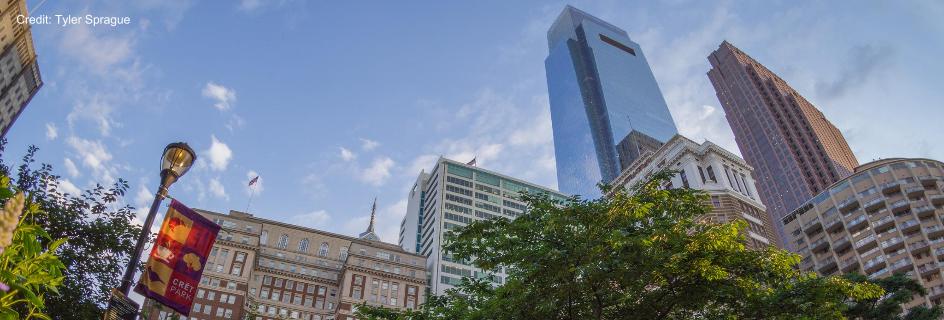- About GPA
- Global Events
- GLOBAL NEWS FROM PHL
- Global Directory
- World Heritage City
- Sustainable Development Goals (SDGs)
- Global Philadelphia Role on Sustainable Development Goals
- Completed Sustainable Development Goals
- SDG#1: No Poverty
- SDG #2: Zero Hunger
- SDG#3: Good Health & Well-Being
- SDG#4: Quality Education
- SDG#5: Gender Equality
- SDG#6: Clean Water & Sanitation
- SDG#7: Affordable and Clean Energy
- SDG #8: Decent Work and Economic Growth
- SDG #9: Industry, Innovation, and Infrastructure
- SDG#10: Reduced Inequalities
- SDG#11: Sustainable Cities and Communities
- SDG#16: Peace, Justice and Strong Institutions
- SDG#17: Partnerships for the Goals
- Press
Home ›
Penn Museum Offers Emergency Workshops To Protect Syrian Collections
Posted on August 6, 2014
.jpg)
Peak Johnson, for GPA -- In an effort to help stem the loss of the region’s significant cultural heritage, Penn Museum’s Penn Cultural Heritage Center and the Smithsonian Institution, in cooperation with the Syrian Interim Government’s Heritage Task Force, have come together to offer assistance for museum curators, heritage experts and civilians working to protect cultural heritage inside Syria.
A three-day training program known as the “Emergency Care for Syrian Museum Collections,” focusing on safeguarding high-risk collections, was completed in late June.
The workshops involve formal presentations regarding emergency preparedness, packing and crating and collections and building stabilization. The trainings discuss lessons learned in the protection of cultural heritage from conflicts in Timbuktu, Iraq and even during World War II.
“We build in time for discussion, so that we can learn from our Syrian colleagues what some of their pressing concerns are and we brainstorm solutions together. The workshop really is a dialogue with a group of people trying to come up with options in unfortunate situations,” said Brian Daniels, Ph.D., director of research and programs at Penn. “Finally, we sent emergency materials back into Syria that are hard to come by such as rolls of plastic sheeting for packing.”
The project began with a request from Dr. Salam al-Kuntar in 2013, then a visiting assistant professor at Penn's Department of Anthropology and visiting assistant curator at the Penn Museum.
She had been the deputy director of Syria’s Directorate-General of Antiquities and Museums and she had left the country when it was clear that she was at extreme personal risk. She approached us at the Penn Cultural Heritage Center to develop an initiative that would reach inside Syria to assist museum professionals, archaeologists and other activists that were attempting to document damage and safeguard what collections they could.
Penn was able to contribute by rallying support for the initiatives from the U.S. international heritage community. They were also able to draw upon the expertise of the U.S. Committee of the Blue Shield, which formed following the 2003 looting of the Iraq National Museum in Baghdad.
“The experience and lessons learned from Iraq certainly shaped how we developed this program,” Daniels said.
About 20 people from several Syrian provinces attended the first training, held in an undisclosed location outside of Syria, and facilitated by Daniels, Corine Wegener, cultural heritage preservation officer of the Smithsonian Institution and Robert Patterson, exhibits specialist for the Smithsonian’s National Museum of the American Indian.
Workshop leaders were joined by Syrian scholars such as Dr. Salam al-Kuntar, Amr Al-Azm, chair of the Syrian Interim Government’s Heritage Task Force and associate professor at Shawnee State University and Ali Othman, a researcher at the Université of Paris. Technical assistance for the program was provided by the U.S. Institute of Peace and The Day After Association, a Syrian-led civil society non-governmental organization. The training was funded by the Smithsonian and the J. M. Kaplan Fund.
“I am not sure that the Penn Museum had ever planned to work on this specific initiative, but when the request for assistance came from Salam and as she introduced us to her colleagues, it was something that we could not ignore,” Daniels said.
There are many areas of the world that are experiencing great need with the intentional destruction of cultural heritage, Daniels added. This intervention was Syria focused not because Penn wanted to exclude other places, but because there was a clear possible intervention with personnel at Penn.
Penn’s partners at the Smithsonian, for example, completed a project in Mali following the invasion of Al Qaeda in the Maghreb. They had the contacts and personnel to effectively complete that intervention, but initiatives likes these aren't easy.
“There are challenges at multiple levels. As you might imagine, the conflict itself hampers communication inside Syria and our ability to bring people out for training. Participants need to go through screening by the U.S. government in order to vouch for their status,” Daniels said. “This can take some time. Our recent training had been delayed twice and we only received final clearance four days before we were scheduled to leave.”
Despite these challenges, the most important aspect of the training initiatives is the hope that they offer.
“There is no illusion among our Syrian colleagues about how grim the situation is. They are fully aware that their lives are at risk simply by the act of defending a museum collection,” Daniels added. “However, they are willing to take the risk because they believe that some things need to be saved for the future of Syria. I was told often how glad our colleagues were to know that they were not alone.”
Photo courtesy of the Penn Museum.







